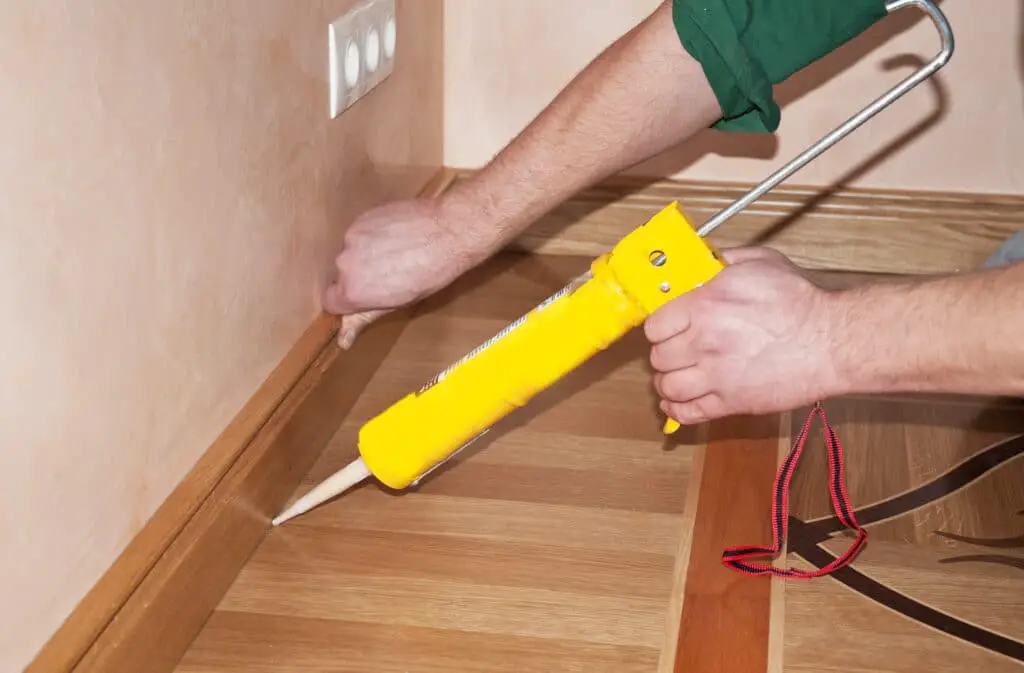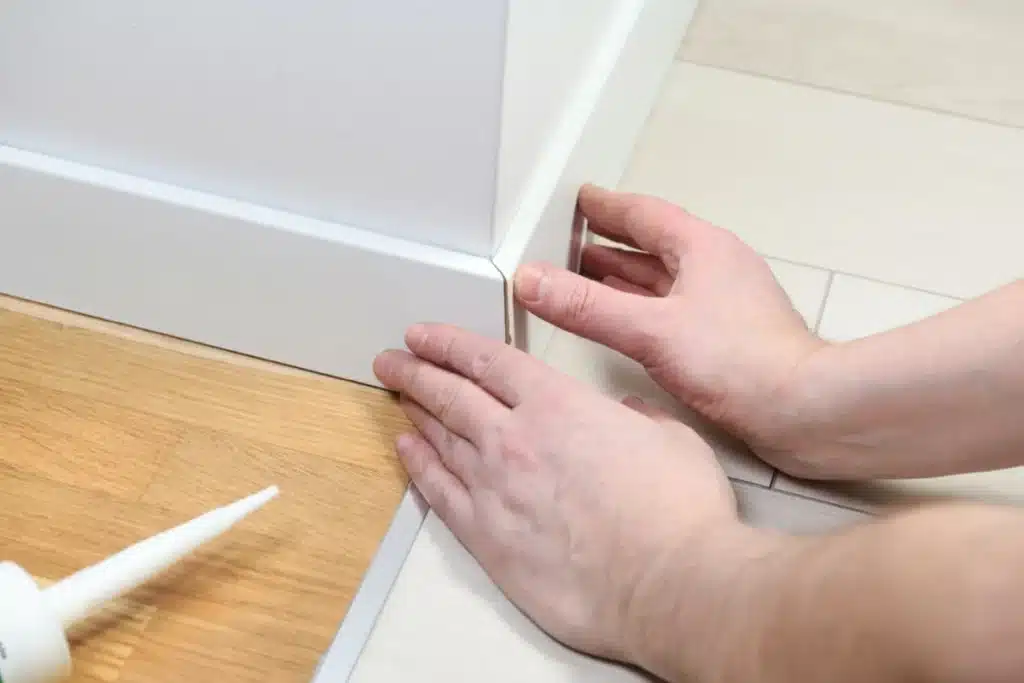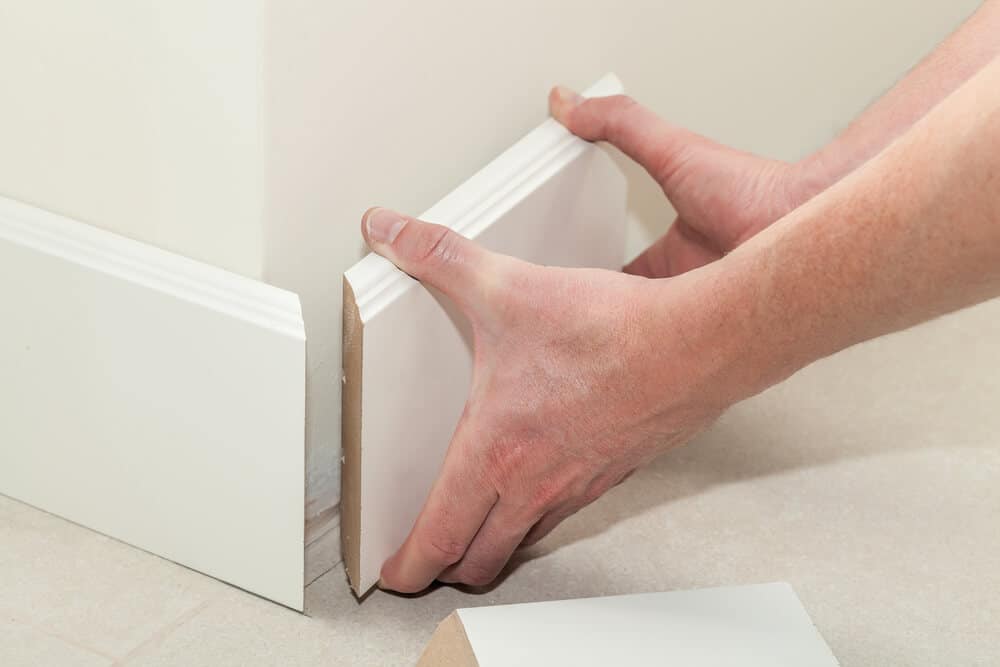How To Glue Baseboards
Introduction
How To Glue Baseboards: Baseboards are an essential part of any home’s interior design. They not only provide a finished look to the walls but also protect them from damage. However, over time, baseboards can become loose or detached from the wall, requiring repair or replacement. Gluing baseboards is a relatively simple process that can be done by anyone with basic DIY skills. In this article, we will guide you through the step-by-step process of how to glue baseboards effectively.
Before you begin gluing the baseboards heat, it is crucial to prepare the surface properly. Start by removing any existing adhesive or caulk from the wall and the back of the baseboard using a putty knife or scraper. This will ensure a clean and smooth surface for the glue to adhere to. Additionally, sand any rough edges or imperfections on the baseboard to create a better bonding surface.
Choosing the right glue is essential for a strong and long-lasting bond. Look for a construction adhesive that is specifically designed for bonding wood to walls. These adhesives are usually waterproof and provide excellent adhesion. Avoid using regular household glue or super glue as they may not provide the necessary strength and durability.

What is the best glue to use for baseboards?
Which adhesive is right for your project? Whether you are installing new baseboards or replacing old ones, you can’t go wrong with high-strength adhesives like the ones in Loctite’s Power Grab product family. They reduce the need for nails, which makes them perfect for installing baseboards.
One popular option for baseboard installation is construction adhesive. Construction adhesive is typically available in both tube and cartridge form, allowing for easy application.
When it comes to installing or repairing baseboards, choosing the right glue is crucial. With so many options available, it can be overwhelming to determine which glue is the best for baseboards. In this article, we will explore some of the top choices and discuss their pros and cons.
Another commonly used glue for baseboards is wood glue. It is easy to work with and dries clear, ensuring a seamless finish. If you are looking for a glue that offers both strength and flexibility, consider using polyurethane adhesive. It is also resistant to moisture, making it suitable for baseboards in areas prone to humidity. However, polyurethane adhesive can be more expensive than other options and may require longer drying times.
Can I just glue baseboards?
It’s simply easier to glue on baseboards than to nail them to the wall. And when you use the right adhesive and apply it properly, your baseboards will stay securely fastened. Gluing baseboards is a common method used to install them in homes. However, there are a few factors to consider before deciding to glue baseboards.
Firstly, it is important to ensure that the surface where the baseboards will be glued is clean and free of any debris. This will help the glue adhere better and provide a stronger bond. It is recommended to clean the surface with a mild detergent and water solution before applying the glue.
Secondly, it is crucial to choose the right type of glue for the job. There are various types of adhesives available in the market, each with its own set of properties and recommended uses. It is important to select a glue that is specifically designed for bonding baseboards to walls. This will ensure a secure and long-lasting bond.
Thirdly, it is important to consider the weight and length of the baseboards. If the baseboards are heavy or long, it may be necessary to use additional support, such as nails or screws, in addition to the glue. This will help prevent the baseboards from sagging or falling off the wall over time.
Additionally, it is important to follow the manufacturer’s instructions when applying the glue. This includes applying the glue evenly and in the recommended amount. It is also important to allow the glue to dry completely before applying any pressure or weight to the baseboards.
How do you glue baseboard to concrete?
Apply construction adhesive, in a zigzag pattern, over a section of baseboard trim that will abut to the first section. In this answer, we will discuss the steps involved in gluing baseboard to concrete.
Prepare the surface
The first step in gluing baseboard to concrete is to prepare the surface. Start by cleaning the concrete thoroughly to remove any dirt, dust, or debris. Use a broom or vacuum cleaner to sweep the area, and then use a damp cloth or mop to wipe the surface clean. This will ensure that the adhesive sticks properly to the concrete.
Choose the right adhesive
Next, you need to choose the right adhesive for gluing the baseboard to concrete. There are various types of adhesives available in the market, such as construction adhesive or epoxy adhesive. Read the instructions on the adhesive carefully to ensure that it is suitable for your project.
Apply the adhesive
Once you have chosen the adhesive, it is time to apply it to the baseboard. Apply a thin, even layer of adhesive to the back of the baseboard using a putty knife or a caulk gun. Make sure to cover the entire surface of the baseboard with adhesive, but avoid applying too much as it can cause the baseboard to warp or bend.
Press the baseboard onto the concrete
After applying the adhesive, carefully press the baseboard onto the concrete. Make sure to align it properly and apply even pressure to ensure a strong bond. You can use a rubber mallet or a hammer with a scrap piece of wood to gently tap the baseboard into place.
What is the best way to glue concrete?
- Apply the two-part concrete epoxy. Apply the epoxy glue or putty to one or both surfaces, as per the instructions, and remove any excess epoxy glue as quickly as you can
- Leave it to dry. Support or clamp the bonded surfaces together and leave them to dry for the time specified on the product’s instructions
- Finish
There are several options available for gluing concrete, each with its own advantages and disadvantages. Epoxy is often considered the best adhesive for bonding concrete. It is a two-part adhesive that consists of a resin and a hardener. It is also resistant to water, chemicals, and temperature fluctuations, making it suitable for both indoor and outdoor applications.
Construction adhesive is another popular option for gluing concrete. It is a versatile adhesive that can bond a wide range of materials, including concrete, wood, metal, and plastic. Construction adhesive is easy to use and provides a strong bond, but it may not be as durable as epoxy.
Polyurethane adhesive is a flexible adhesive that can bond concrete, as well as other materials such as wood, metal, and plastic. It is resistant to water and temperature fluctuations, making it suitable for both indoor and outdoor applications. Polyurethane adhesive is easy to use and provides a strong bond, but it may not be as durable as epoxy.
Cement-based adhesive is specifically designed for bonding concrete. It is a powder that is mixed with water to create a paste, which is then applied to the concrete surface. Cement-based adhesive provides a strong bond and is resistant to water, but it may not be as durable as epoxy or polyurethane adhesive. It is important to follow the manufacturer’s instructions when using cement-based adhesive to ensure a proper bond.
What glue adheres to concrete?
When it comes to adhering materials to concrete, it is important to choose the right type of glue to ensure a strong and long-lasting bond. Concrete is a porous material, which means that not all glues will work effectively on its surface.
Epoxy glue is one of the most popular choices for bonding materials to concrete. It is a two-part adhesive that consists of a resin and a hardener. Epoxy glue is ideal for bonding materials such as metal, wood, and plastic to concrete surfaces. It is a versatile adhesive that can bond a wide range of materials to concrete, including wood, metal, and plastic.
Polyurethane adhesive is a flexible and waterproof glue that is suitable for bonding materials to concrete. Polyurethane adhesive is ideal for bonding materials such as wood, metal, and plastic to concrete surfaces.
Super glue, also known as cyanoacrylate adhesive, is a fast-drying and strong adhesive that can bond a variety of materials to concrete. Super glue is ideal for bonding materials such as plastic, metal, and ceramics to concrete surfaces. Gluing baseboards is a simple process that can greatly enhance the appearance of a room.
To properly glue baseboards, follow these steps
Prepare the surface – Before applying any adhesive, make sure the surface is clean and free of dust or debris.
Apply a thin, even layer of adhesive to the back of the baseboard, ensuring that it covers the entire surface. Press the baseboard into place – Carefully align the baseboard with the wall and press it firmly into place. Use a level to ensure that it is straight and adjust as necessary. Apply gentle pressure for a few minutes to allow the adhesive to bond.
Secure the baseboard – To ensure a strong bond, use finishing nails or brad nails to secure the baseboard in place. Place the nails at regular intervals along the length of the baseboard, making sure to countersink them slightly.
What type of adhesive is recommended for gluing baseboards?
When it comes to gluing baseboards, it is important to use the right type of adhesive to ensure a strong and long-lasting bond. The recommended adhesive for gluing baseboards is a construction adhesive specifically designed for use with wood. These adhesives are typically labeled as “”wood glue”” or “”wood adhesive”” and can be found at most hardware stores.
It is important to carefully read and follow the manufacturer’s instructions when using wood adhesive. Some adhesives may require you to apply the adhesive to both the baseboard and the wall, while others may only require application to one surface. Additionally, make sure to allow the adhesive sufficient time to dry and cure before applying any pressure or weight to the baseboards.
Are there any specific tools or materials needed for gluing baseboards?
When it comes to gluing baseboards, there are a few specific tools and materials that you will need to ensure a proper and successful installation. Firstly, you will need a good quality adhesive that is specifically designed for bonding baseboards to walls. It is recommended to use a construction adhesive that is suitable for both interior and exterior applications. This type of adhesive is typically strong and durable, providing a long-lasting bond between the baseboard and the wall.
In addition to the adhesive, you will also need a caulking gun to apply the glue evenly and efficiently. A caulking gun allows for precise control and helps to prevent any excess adhesive from oozing out. It is important to choose a caulking gun that is compatible with the adhesive tube size you are using. Furthermore, you will need a utility knife or a similar cutting tool to trim the baseboards to the desired length and shape. This will ensure a clean and professional-looking installation.
How long does the adhesive typically take to dry when gluing baseboards?
When gluing baseboards, the drying time of the adhesive can vary depending on several factors. The type of adhesive used, the temperature and humidity of the environment, and the porosity of the materials being glued all play a role in determining the drying time.
On average, most adhesives used for gluing baseboards will take anywhere from 24 to 48 hours to fully dry. However, it is important to note that this is just an estimate and the actual drying time may be longer or shorter. It is always best to refer to the manufacturer’s instructions for the specific adhesive being used, as they will provide the most accurate information regarding drying time.
During the drying process, it is important to avoid putting any pressure or weight on the baseboards to ensure a strong bond. Additionally, it is recommended to keep the area well-ventilated to aid in the drying process. If the baseboards are being installed in a high humidity environment, it may take longer for the adhesive to dry completely.
Are there any additional tips or precautions to consider when gluing baseboards?
When gluing baseboards, there are a few additional tips and precautions to keep in mind to ensure a successful and long-lasting installation. Firstly, it is important to prepare the surface properly before applying the adhesive. Make sure the baseboards and the wall are clean and free from any dust or debris. This will help the adhesive bond better and prevent any future issues.
Another important tip is to apply the adhesive evenly and in the right amount. Too much adhesive can cause the baseboards to warp or buckle, while too little adhesive may result in a weak bond. Follow the manufacturer’s instructions for the specific adhesive you are using, and use a caulking gun or a trowel to apply the adhesive smoothly and evenly along the back of the baseboards.
It is recommended to use clamps or weights to hold the baseboards in place while the adhesive dries. This will help ensure a strong bond and prevent the baseboards from shifting or moving during the drying process. Finally, allow the adhesive to fully dry and cure before painting or applying any finishing touches to the baseboards. This will help avoid any damage or smudging of the adhesive, resulting in a professional and polished look.

Conclusion
Gluing baseboards is a simple and effective way to enhance the appearance of any room. By following a few easy steps, you can achieve a professional-looking finish that will last for years to come. Whether you are a seasoned DIY enthusiast or a beginner, this guide has provided you with the necessary information to successfully glue baseboards.
It is important to prepare the surface before applying any glue. This involves cleaning the baseboards thoroughly and ensuring they are free from dust and debris. Additionally, it is crucial to measure and cut the baseboards accurately to ensure a seamless fit. Taking the time to properly prepare the surface will result in a stronger bond and a more polished final result.
When it comes to choosing the right adhesive, it is essential to select a product that is specifically designed for install baseboards. This will ensure a strong and durable bond that can withstand the test of time. Additionally, it is important to follow the manufacturer’s instructions regarding application and drying times. By doing so, you can ensure that the glue sets properly and provides a secure attachment.
Gluing baseboards is a straightforward process that can greatly enhance the appearance of any room. By properly preparing the surface, choosing the right adhesive, and exercising caution during application, you can achieve a strong and durable bond. Whether you are a seasoned DIY enthusiast or a beginner, this guide has provided you with the necessary information to successfully glue baseboards. So go ahead and give it a try – you’ll be amazed at the difference it can make!








